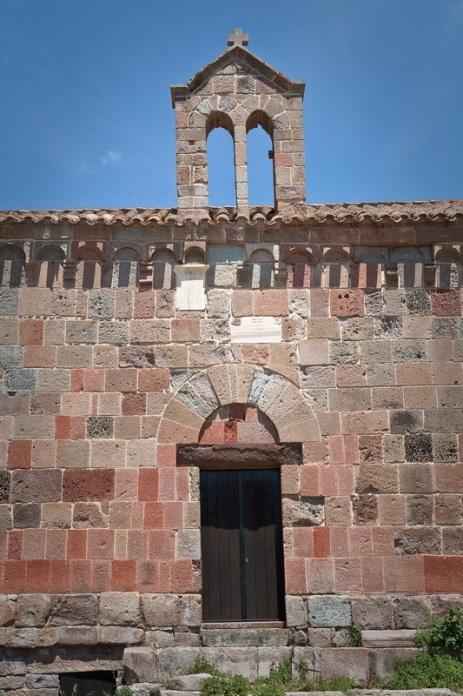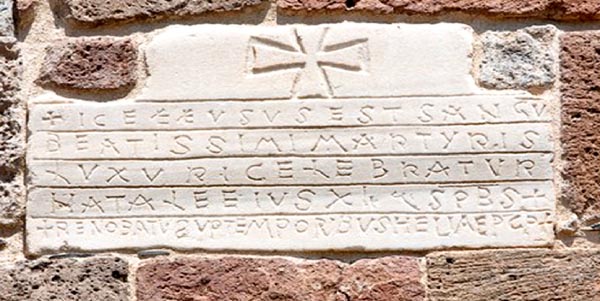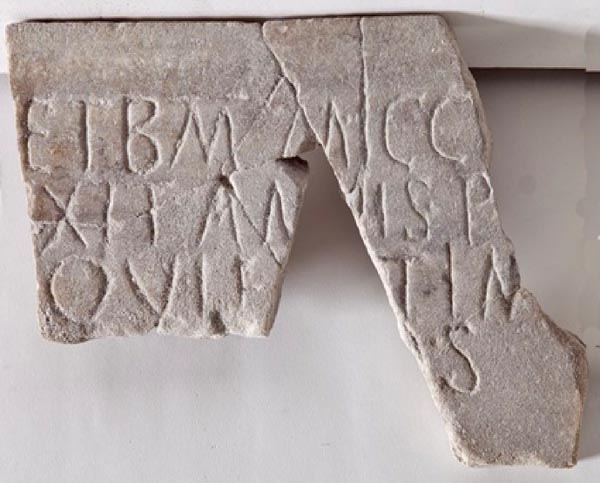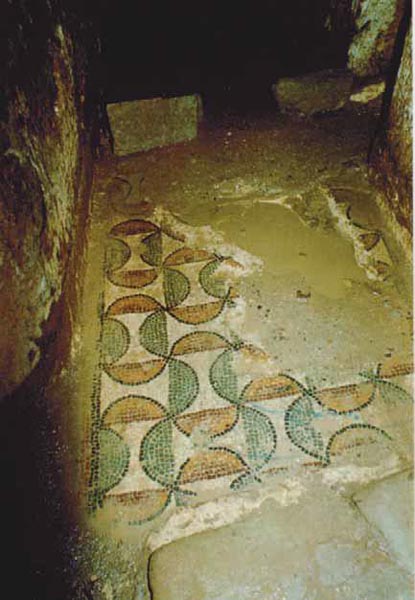Church of San Lussorio
A short distance away from the amphitheatre, South of the habitat, there is a necropolis that was used for centuries, from II A.D. until the Middle Ages.
The nucleus of interest is dated by the presence of the cult of the martyr San Lussorio (fig. 1) who we know was definitely worshipped in Sardinia in the VI cent. A.D.

The inscription (fig. 2) now walled in the church walls, was probably originally on the martyr's tomb, and is dedicated to him by Bishop Elia in memory of the martyrdom.

Above a survey, still in pagan times, they built a small underground apsidal room which was used for the martyr in the Diocletian age (end III- start of IV cent. A.D.). From that moment, there was a strong increase in burials in the hypogeum, where the dead were placed as close as possible to the saintly body. These tombs were inscribed too, like the one dated VI cent. A.D. of Miccina (fig. 3), whose name was connected to the Punic linguistic substratum of Sardinia.

In the first decades of the IV century, the room had a floor which, in turn, was covered by another mosaic floor made in the vandalistic period, between the V and VI cent. A.D., (fig. 4) when a renovation was done and a small building was added to the construction, also decorated by a mosaic.

During the VII century the buildings degraded and were replaced by a small church, which also fell into ruin.
In the decades of the XII century, the Benedictine monks of San Vittore di Marsiglia built the church; it was then rebuilt the following century following a collapse.
Bibliografia
- A. M. CORDA, Le iscrizioni cristiane della Sardegna anteriori al VII secolo, Città del Vaticano 1999, pp. 153-155.
- C. OPPO, Il santuario di San Lussorio a Forum Traiani. Alcune note sulla chiesa bizantina, in Città, territorio, produzione e commerci nella Sardegna medievale. Studi in onore di Letizia Pani Ermini, a cura di R. Martorelli, Cagliari 2002, pp. 169-186.
- P. G. SPANU, La Sardegna bizantina tra VI e VII secolo, collana "Mediterraneo tardoantico e medievale. Scavi e Ricerche", Oristano 1998, pp. 65-74.
- P. G. SPANU, Martyria Sardiniae. I santuari dei martiri sardi, collana "Mediterraneo tardoantico e medievale. Scavi e Ricerche", Oristano 2000, pp. 97-114.
- R. ZUCCA, Le iscrizioni latine del Martyrium di Luxurius (Forum Traiani – Sardinia), Oristano 1988.
- R. ZUCCA, Forum Traiani alla luce delle nuove scoperte archeologiche, in Il Suburbio delle città in Sardegna: persistenze e trasformazioni, Atti del III convegno sull'archeologia tardo-romana e altomedievale in Sardegna, Taranto, 1989, pp. 125-143.
- R. ZUCCA, Martyrium Luxurii, in La Sardegna paleocristiana tra Eusebio e Gregorio Magno. Atti del Convegno Nazionale di studi, Cagliari, 1999, pp. 515-523.

 VR
VR